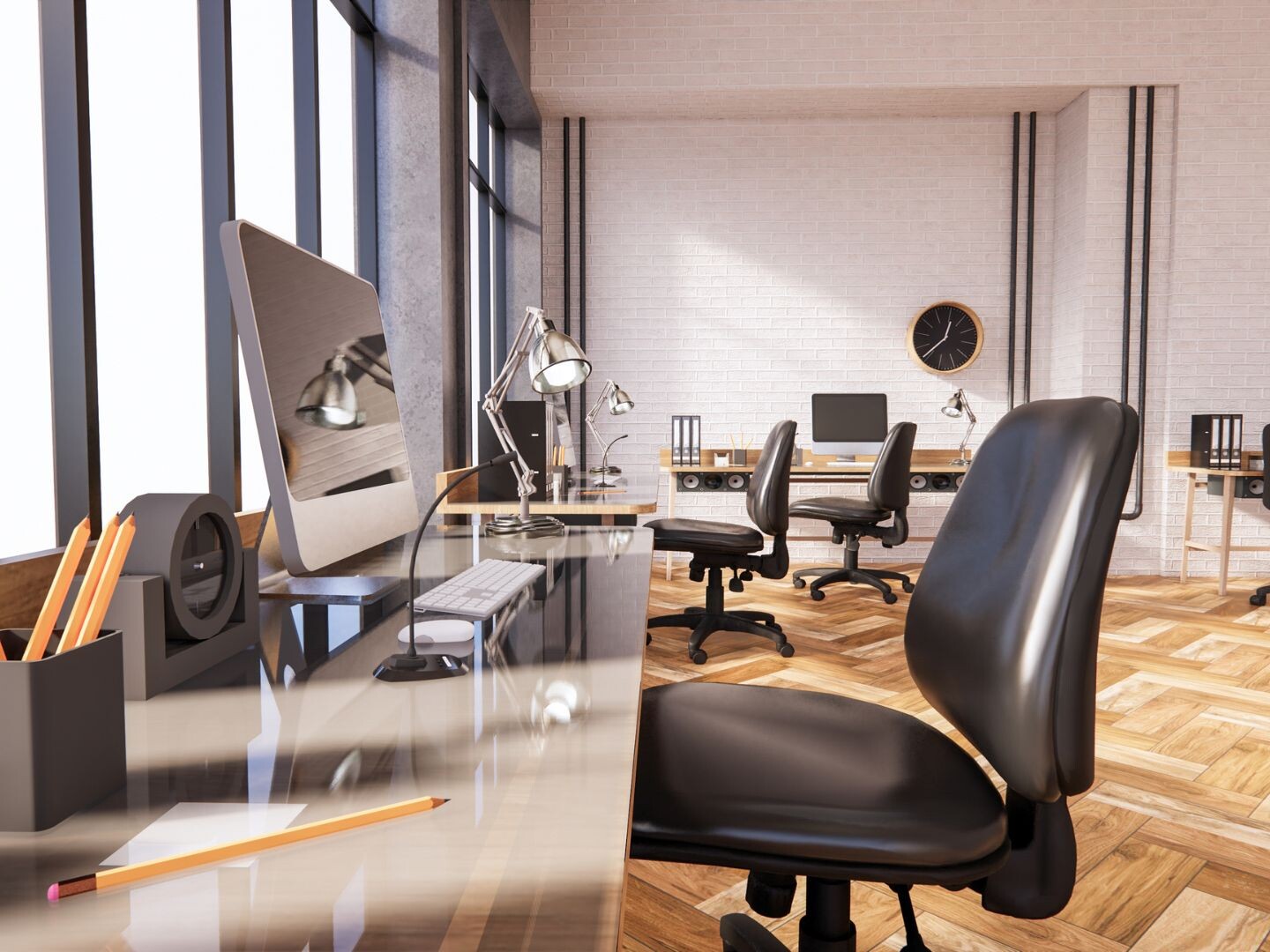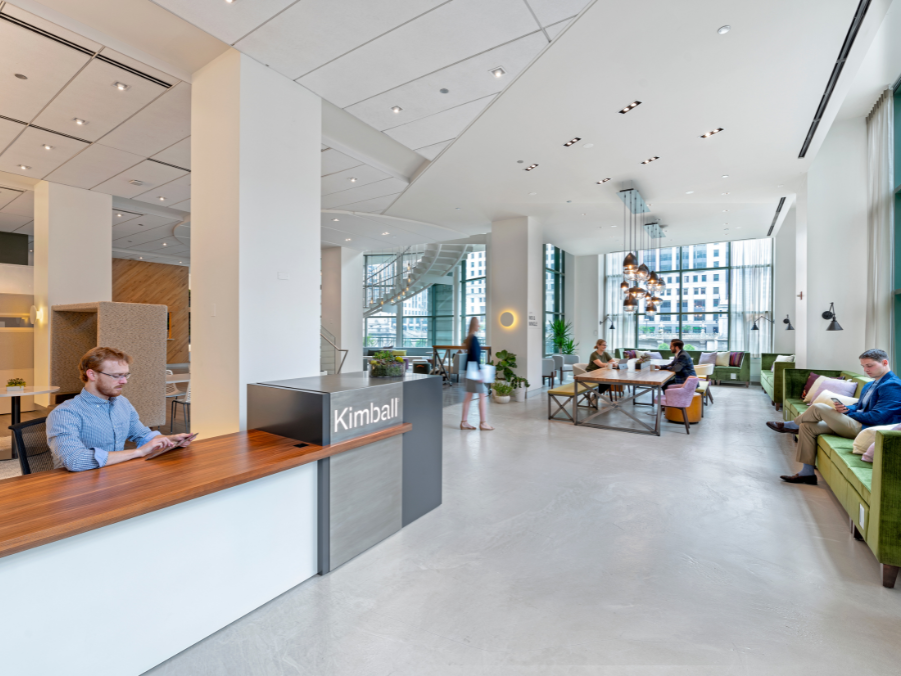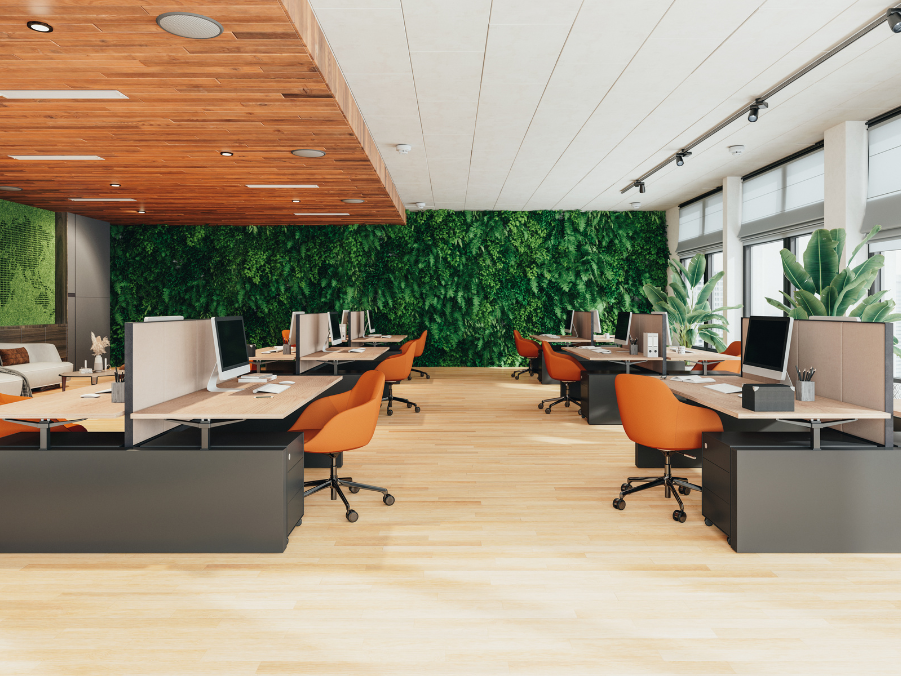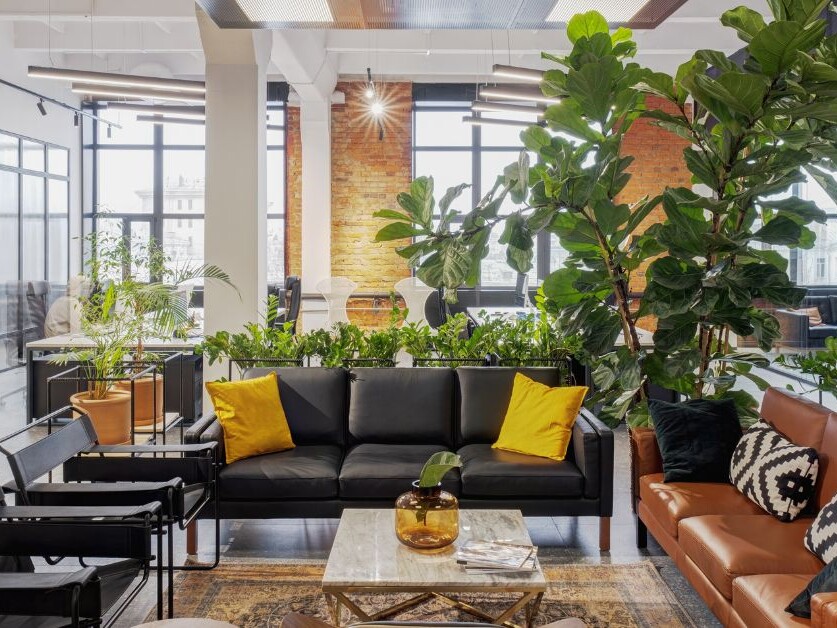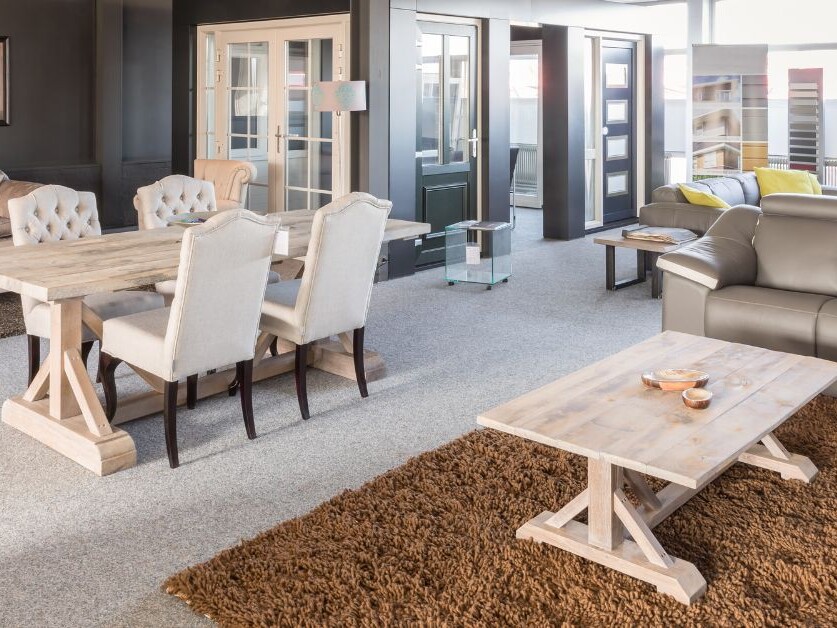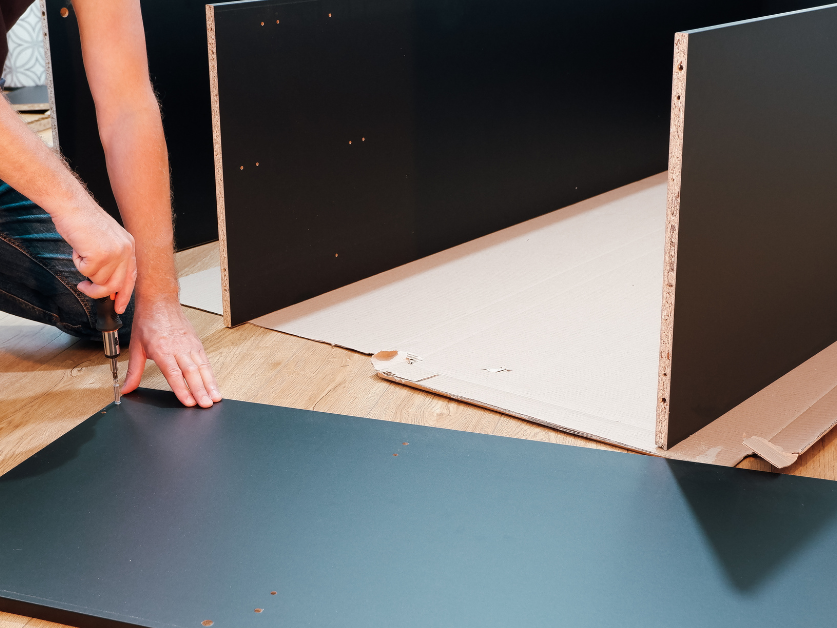Offices often become our home away from home, where we spend, on average, a third of our lifespan. Why not let our biggest mood enhancer be an important element of your next office design? The importance of office lighting is often overlooked, so when planning your next office furniture & design project, take serious consideration of this crucial element. By following some of the professional design tips below, a dull, uninspiring environment can be transformed into a shiny, happy, productive workplace.
Directly Indirect
Overhead lights can cause glare and shadowing, which can become a major distraction and subconscious frustration for workers. Instead, find ways to diffuse ambient light that will in turn illuminate your office space. If using local lighting, lamp shades are useful because they soften & scatter harsher light. The same effect can be accomplished with an upward-shining floor lamp that reflects light off the walls and ceilings. The objective here is illuminate your entire space without creating undue glare and shadows. LED technology is becoming increasingly popular for this task, and with its highly efficient lifespan and low operating costs, LED lighting is an excellent choice.
Throw and Show your Light
Typically, offices are built and designed to use standard, direct lighting, which is mostly fluorescent. Without any additional creativity, this lighting can make a space look flat and lifeless, which affects the well-being of workers. Try “throwing light”, or directing light onto walls, ceilings, and fixtures in order to create a sense of movement or motion. This effect will also make the room appear larger, brighter, and more vibrant. Use lighting to emphasize your company logo, wall art, pedestals, and other fixtures with an individual touch that will make that piece stand out, while also providing ambient light.
Natural Light
Take advantage of as much natural light as possible from windows, skylights or other portals. Sunlight produces the warmest lighting possible, but be sure to account for areas that might create overwhelming glare or heat during certain times of the day.
Natural light is best staged in front of or next to work surfaces and computer screens to avoid glare. Take consideration when positioning workstations facing north or south to avoid shadowing during any point in the day.
Personal Lighting
It’s often an overlooked design feature, but personal lighting can add a warm, inviting glow to corner areas or office locations where natural light is lacking. Additionally, personal lighting allows you to cater to individual preferences and empower your staff to have control of their own comfort.



